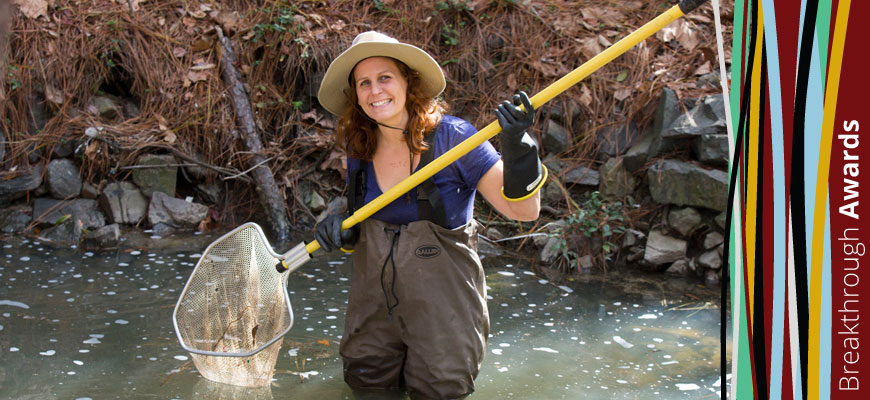
A good day fishing
USC Aiken biology researcher Virginia Shervette helps manage commercial fish populations
Posted on: March 10, 2017; Updated on: March 10, 2017
By Page Ivey, pivey@mailbox.sc.edu, 803-777-3085
Virginia Shervette gets some groans from her biology students at USC Aiken when she introduces a new fish species to her class with the phrase, “Oh, that’s a tasty one.”
But she makes it very clear that a big part of her research is to focus on managing commercial fish populations.
“Part of the goal of the group that I work with is to ensure that the fishermen are part of the process and that we utilize their expertise,” says Shervette, an assistant professor of biology and geology at USC Aiken. “We’re not just coming in as scientists who know everything and are telling them what to do.”
Getting her undergraduate students to help with her research projects is key, she says, to conducting the research and to helping students meet their research requirements for graduation.
“My students get this hands-on exposure to fisheries management and fisheries research,” Shervette says.
She has received more than $670,000 in funding from NOAA, the Environmental Protection Agency and the National Science Foundation as well as large grants from ASPIRE and USC flood research funds. She also has written more than 20 peer-reviewed papers for publications, including Journal of Experimental Marine Biology and Ecology, North American Journal of Fisheries Management and Copeia.
“As primarily an undergraduate teaching institution, it is essential that faculty
involve our undergraduates in their research,” says Jeff Priest, executive vice chancellor
for academic affairs at USC Aiken. Priest notes that 11 of Shervette’s students have
made more than 30 presentations at various professional conferences.
Part of the goal of the group that I work with is to ensure that the fishermen are part of the process and that we utilize their expertise. We’re not just coming in as scientists who know everything and are telling them what to do.
Virginia Shervette, assistant professor of biology and geology at USC Aiken
Lately, that work has focused on an invasive species believed to have gotten its start
in the Atlantic Ocean some 30 years ago as folks dumped unwanted aquarium fish in
the ocean.
“We’ve done a lot with lionfish lately, and it’s made a lot of students here in Aiken aware of a major marine biology issue that otherwise they wouldn’t have a clue about and that’s the problem we have with invasive species,” she says.
The native Pacific Ocean fish have no natural predators in the Atlantic and proliferate here while damaging other fish populations and habitats.
Shervette describes the fish as “really, really tasty,” but notes they are hard to catch and handle because of their venomous spines.
“Some people say it’s the worst pain they have ever felt,” Shervette says. But, once they are killed, the venom dissipates quickly and the fish can be fileted and enjoyed.
“There are these lionfish rodeos up and down the coast to get people to eat them to build up a commercial market so people will want to buy them,” Shervette says. The fish can be special-ordered through major grocery chains, but it costs $30 a pound or more.
Convincing fishermen to go after them is a little difficult.
“They are not an easy fish to catch for commercial purposes because they don’t go into traps very readily and they occur in relatively deep waters, 60 feet or deeper,” she says. “The main way to get them is to go offshore and spear them.”
Share this Story! Let friends in your social network know what you are reading about